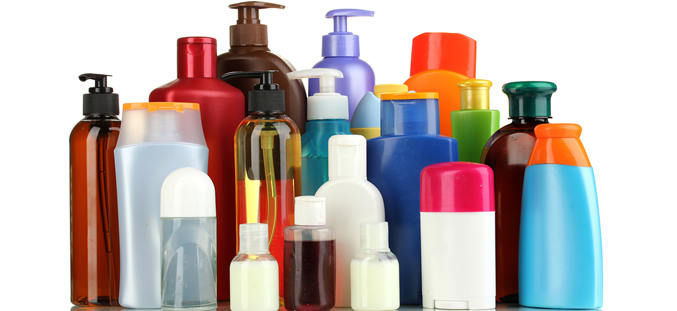A chemical found in everyday toiletries including baby wipes and detergents that doctors believes was causing a sharp rise in skin allergies
In the last two years, cases of allergic eczema by exposure to this preservative have increased dramatically, research has found.
The chemical in question, called Methylisothiazolinone (MI) is a common preservative used in toiletries including moist wipes, cleansers, shower gels, soaps, deodorants, shaving foams and sunscreens but also dishwashing liquids, mascaras and hair products.
A study from the Leeds Centre for Dermatology found that cases of contact allergy to MI increased by 6.2 per cent in the last three years – some clinics say this number is as high as 10 per cent.
Moreover, a team of researchers at St. John’s Institute of Dermatology at St Thomas’s Hospital in London saw a staggering rise in MI allergy from just one case in 2010 to 33 in 2012.
Allergic reactions have included severe face swelling and inflammation after using products containing MI such as Piz Buin Day Long Sun Cream. Makers Johnson & Johnson is now removing the chemical from this and other products containing it.
British-made Molton Brown have also announced they removing MI from their products.
‘We are in the midst of an outbreak of allergy to a preservative MI which we have not seen before in terms of scale in our lifetime,’ said Dr John McFadden, consultant dermatologist at St John’s Institute of Dermatology.
‘Many of our patients have suffered acute dermatitis with redness and swelling of the face,’ he explained.
‘I would ask the cosmetics industry not to wait for legislation but to get on and address the problem of MI allergy before the situation gets worse.’
Meanwhile, an Australian study in May this year found that MI in baby wipes was causing a sharp rise in hand dermatitis in parents.
Symptoms of contact allergy eczema (also known as contact allergy dermatitis and caused when the sin is exposed to an irritant) most commonly include intense skin itching, sometimes with sore and painful cracks on the fingers if the hands are affected.
The skin surface may look red and scaly and tiny water blisters may also develop which can leak fluid when scratched. In less severe cases, skin could also look thick and dry with painful cracks forming over joints.
Areas most commonly affected are the face, eyelids, hands, fingers and the genital area as MI and MCI/MI are commonly found in moist toilet paper.
Healthista spoke to study author Dr Rachel Urwin from the Leeds Centre for Dermatology about what to do to avoid the irritant.
‘This preservative is so prolific that avoiding it would rule out use of many household products, which isn’t realistic,’ Dr Urwin said.
‘A compromise might be avoiding products containing MI which are left on the skin rather than washed off as products that are in contact with the skin for longer periods (for example the residue left over from a wipe or a body lotion) may increase risk of a skin allergy reaction.’
‘Anyone developing unexplained eczema, see your GP for a referral to a dermatologist for patch testing,’ sad Dr Unwin. ‘Any parts of the skin can be affected but it’s most commonly occurs on the face eyelids, hands, fingers and genital areas.’
She said work needs to be done by EU authorities and the toiletries industry to help establish safe levels in everyday products.
Find out more at about contact dermatitis from the British Association of Dermatologists http://www.bad.org.uk/site/804/Default.aspx
RELATED STORY 6 BEST Balms for sensitive skin
Like this article? Sign up to our newsletter to get more articles like this delivered straight to your inbox.





















































